String Of Pearls Propagation Guide (High Success Rate)
Have you ever looked at a string of pearls plant and thought “I want one of those!” Well, instead of buying one, why not grow your very own? It’s easy and super satisfying to propagate these unique, beaded succulents right at home. Let me show you how!
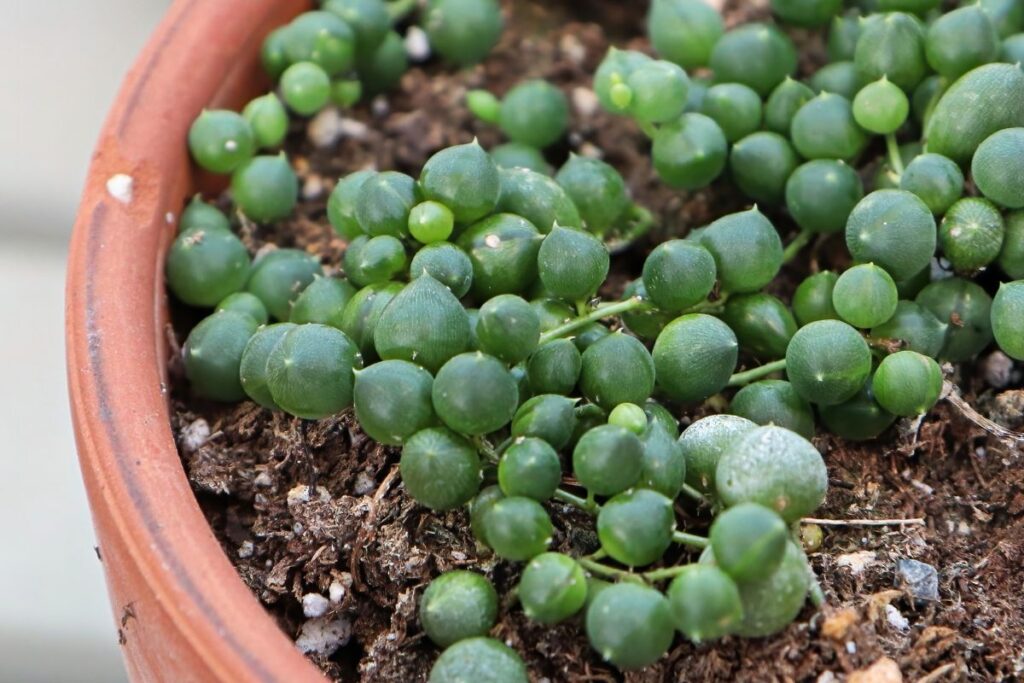
The string of pearls (Senecio rowleyanus) is a trailing succulent with small, pea-sized leaves along thin stems that resemble a pearly necklace. These low-maintenance plants have exploded in popularity as they make awesome hanging baskets or ground covers. But did you know you can grow unlimited new plants for free? Read on to learn the fun ways to propagate strings of pearls!
Contents
- 1 When To Propagate String Of Pearls
- 2 How To Propagate String Of Pearls
- 3 FAQs
- 3.1 How fast do String Of Pearls propagate?
- 3.2 Is it better to propagate String Of Pearls in water or soil?
- 3.3 What is the best way to root a String Of Pearls?
- 3.4 Can you propagate String Of Pearls with just the pearl?
- 3.5 How often do you water newly propagated String Of Pearls?
- 3.6 Why is my String Of Pearls growing so slow?
When To Propagate String Of Pearls
The ideal time for propagating string of pearls is during the warm season from late spring through summer. This allows the cuttings to take root and get established before cooler temperatures arrive.
If you try propagating string of pearls in winter, the cuttings will struggle to develop new roots when the plant is semi-dormant. They may rot from excess moisture instead of putting out new growth. Propagation is much slower and less successful during the cold months.
In early spring, you can have better luck as the plant is just coming out of its resting period. But for the quickest and most vigorous rooting, aim to take your string of pearls cuttings in late spring or summer when the plant is actively growing. The warmer conditions fuel faster propagation compared to cooler seasons.
How To Propagate String Of Pearls
1. From Stem Cuttings
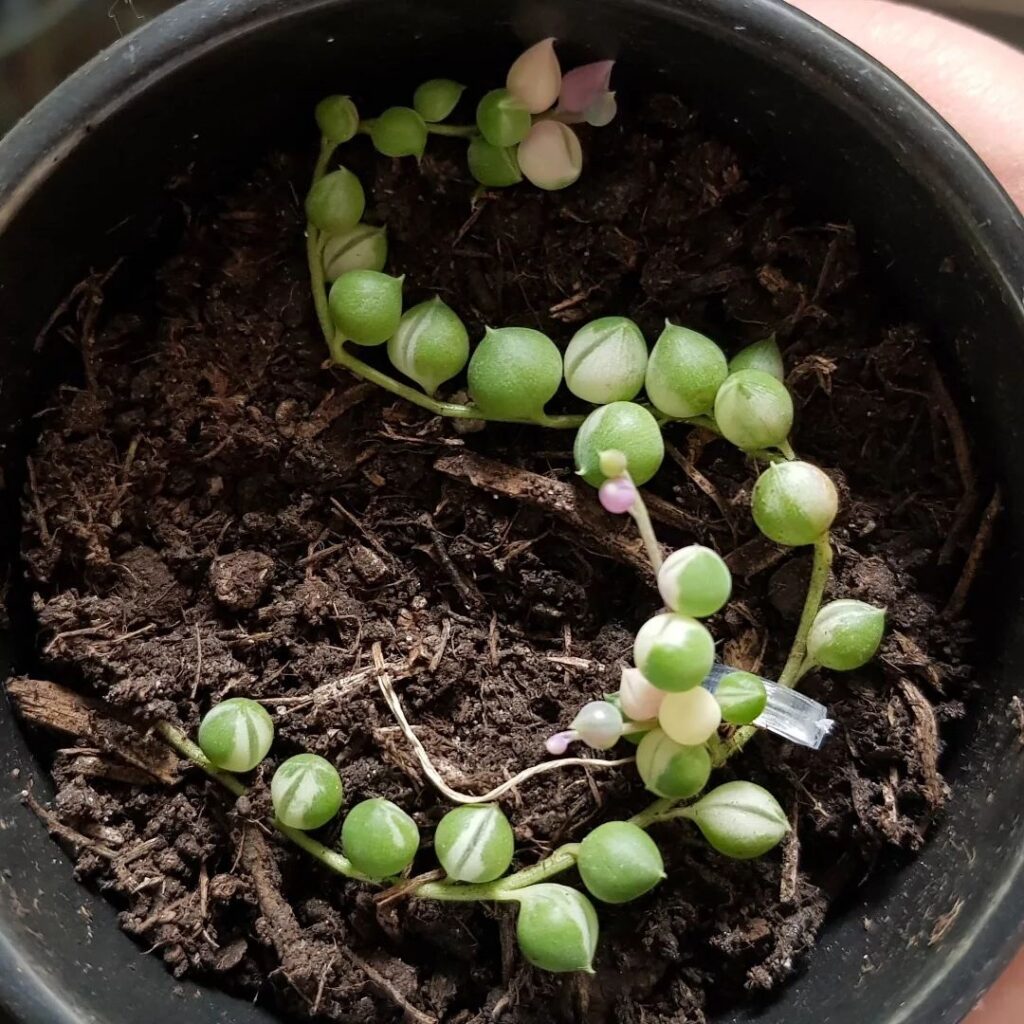
An easy way to propagate string of pearls is by taking stem cuttings:
- Use clean scissors to snip off 3-6 inch stem pieces from a healthy mother plant. Cut just below a leaf node.
- Allow the cut ends to dry for a few days until calloused over. This prevents rot.
- Fill a pot with cactus/succulent soil and moisten it. Stick the cuttings 1-2 inches deep into the soil.
- Place in a sunny spot and water whenever the soil surface becomes dry.
- In 4-6 weeks, you should see new growth! The cuttings have rooted.
2. From Leaves
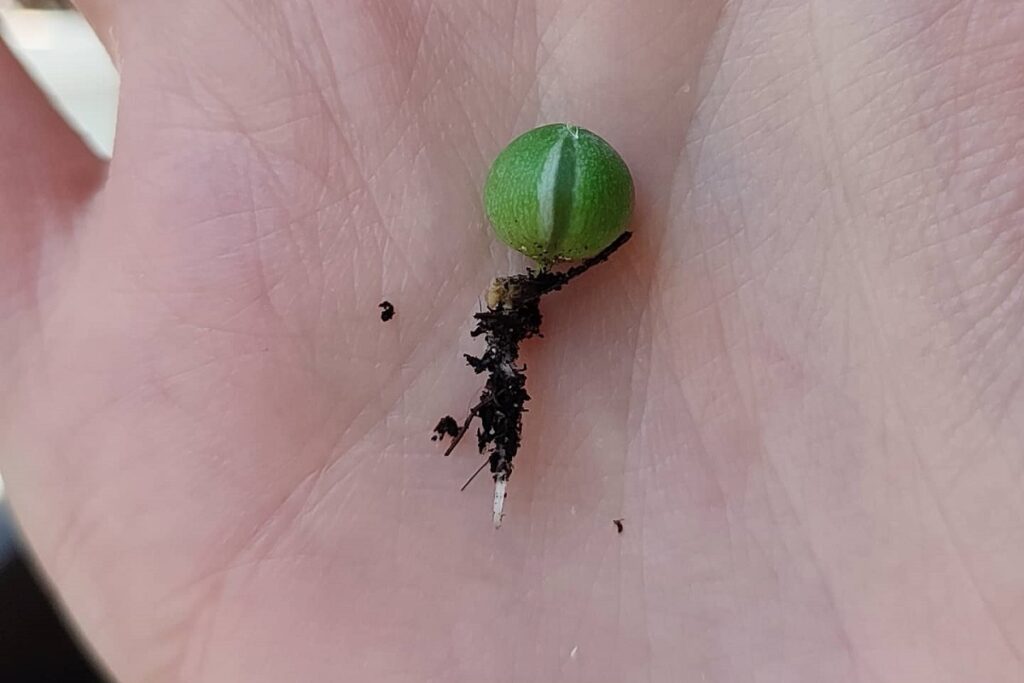
You can also propagate from just the individual pearl-like leaves:
- Gently twist off some plump healthy leaves from the stems.
- Fill a tray or pot with cactus/succulent soil. Place the leaves on top spaced a few inches apart.
- Water the soil until moist but not soaked.
- In bright, indirect light, new babies will slowly sprout from the leaf bases over 2-3 months.
3. From Stem Cuttings in Water
Another fun way to propagate string of pearls is by rooting stem cuttings in water:
- Take 3-6 inch stem cuttings from a healthy mother plant, making sure each one has several leaves.
- Allow the cut ends to dry out for a few days until they have calloused over. This prevents rot when placing in water.
- Fill a clear glass or jar with room temperature water. You want to use enough water to cover about 1-2 inches of the cut stem ends.
- Place the cuttings in the water container, making sure the leaves remain exposed and dry.
- Set the container in a spot with bright, indirect light. Change out the water every 1-2 weeks as it gets cloudy.
- In 2-4 weeks, you should start to see roots emerging from the stem cuttings! Once the roots are a few inches long, you can then transplant the new rooted cuttings into a pot with succulent soil.
FAQs
How fast do String Of Pearls propagate?
String of pearls are rapid growers once they take root. When propagating from stem cuttings in soil, you’ll usually see new growth in 4-6 weeks. Water propagation is a bit faster at 2-3 weeks. Propagating just from the leaves takes the longest at around 2-3 months before baby plants appear. With a little patience, these vigorous trailing succulents will reward you with lots of fresh new strings!
Is it better to propagate String Of Pearls in water or soil?
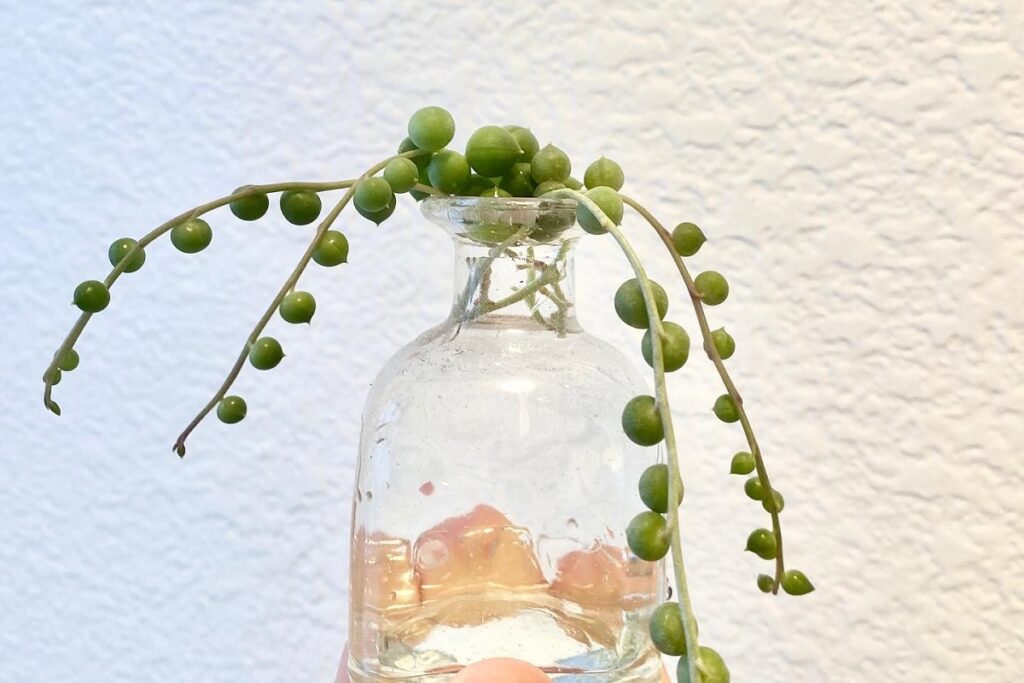
Both water and soil propagation work well for string of pearls. Water propagation tends to have a slightly higher success rate, but requires more monitoring. Soil propagation is easier for beginners. Ultimately it comes down to personal preference. As long as you follow the proper steps for each method, you should be able to successfully propagate new plants either way.
What is the best way to root a String Of Pearls?
For the best results rooting string of pearls, take stem cuttings and allow the cut ends to form a calloused over. Then plant the cuttings in well-draining cactus/succulent soil with just the bottom inch or two buried. Keep the soil lightly moist and provide bright, indirect light. Rooting should occur within 4-6 weeks this way.
Can you propagate String Of Pearls with just the pearl?
Yes, it is possible to propagate string of pearls from just the individual pea-like pearls or leaves! Simply place the pearls on top of dry succulent soil and allow them to root and sprout new plants over time. This method has a lower success rate but is a fun experiment to try.
How often do you water newly propagated String Of Pearls?
When propagating string of pearls, the cuttings or pearls need to stay slightly moist but not soaking wet as they root. Water them thoroughly when first planted, then plan to water about once every 1-2 weeks, ensuring the soil dries somewhat between waterings. Too much moisture can cause rot.
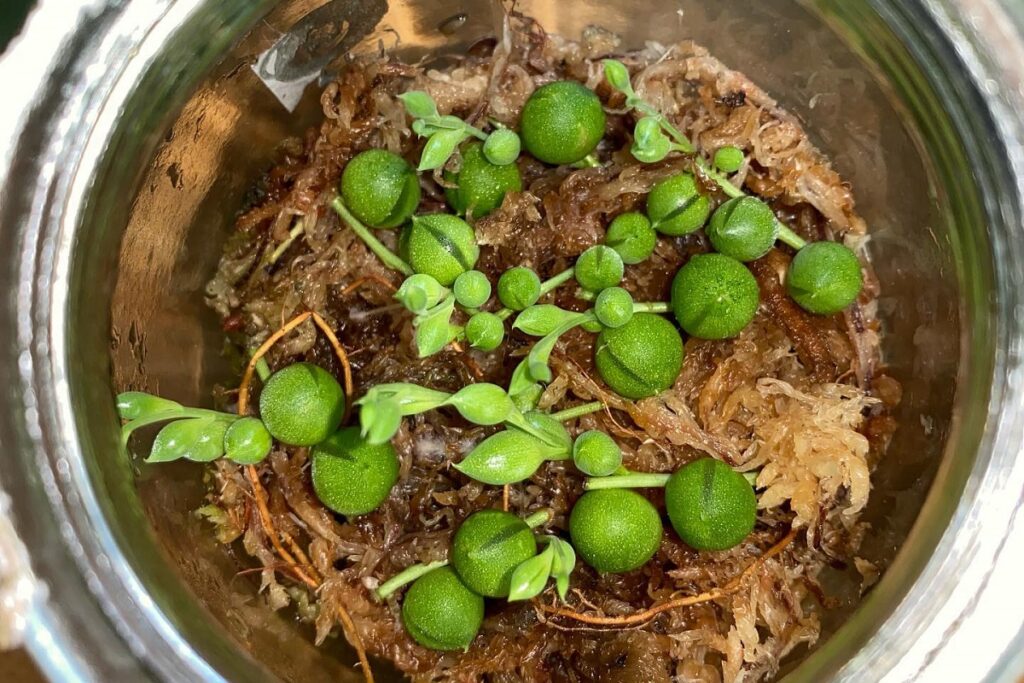
Why is my String Of Pearls growing so slow?
If your string of pearls seems to be growing slowly, the most likely causes are insufficient light or lack of nutrients. These succulents need at least 4-6 hours of direct sun or bright light daily to thrive. They also require well-draining soil amended with compost or fertilizer to provide nourishment. Improper lighting and nutrition will stunt their growth.
